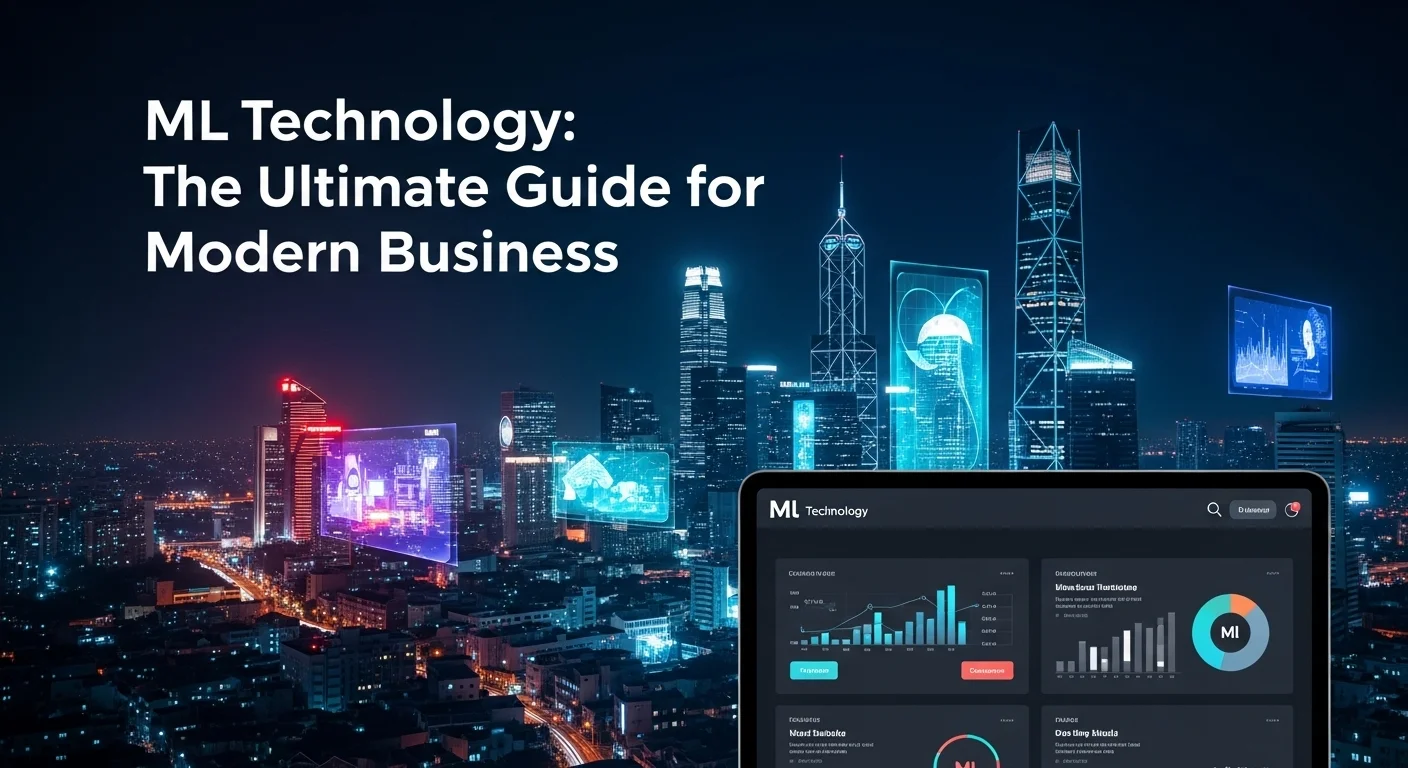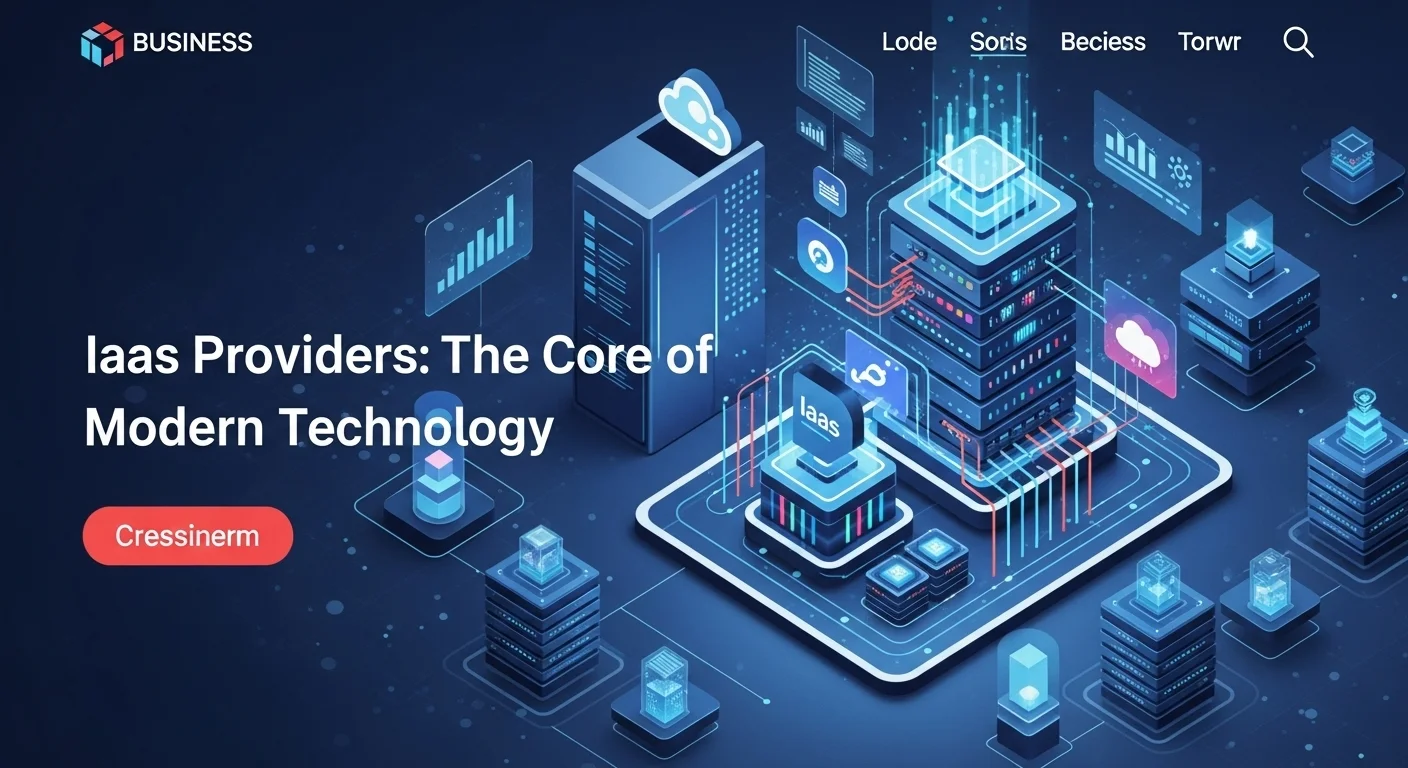Machine Learning for Business: A Practical Guide to Driving Growth

Executive Summary
For years, I've watched business leaders treat Machine Learning (ML) like a futuristic concept, something only for tech giants. But the reality is, ML is here, and it's a powerful tool available to everyone. It's not about magic; it's about using data to make smarter decisions. In this guide, I'm going to pull back the curtain on Machine Learning. We'll skip the dense jargon and focus on what really matters: how you can use this technology to enhance customer experiences, streamline your operations, and find a real competitive edge. I'll share insights from my own experience helping companies integrate ML, including the strategies that work and the common pitfalls to avoid. Whether you're a tech enthusiast or a business leader, this guide will give you a clear, practical roadmap to harness the power of ML for real-world growth.
Table of Contents
Table of Contents
- What is Machine Learning and Why is it So Important?
- The Hidden Impact of ML in Our Daily Lives
- Why Your Business Can't Afford to Ignore Machine Learning
- The Journey to Becoming an ML-Powered Business
What is Machine Learning and Why is it So Important?
Machine Learning (ML), at its heart, is a way of teaching computers to learn from experience, much like we do. It’s a key branch of Artificial Intelligence (AI) that’s changing everything. Instead of writing code with rigid instructions for every possible scenario, we give an ML algorithm data and let it figure out the patterns on its own. It builds its own logic to make predictions or decisions. This ability to learn and adapt is what makes Machine Learning a cornerstone of modern technology. Every day, we create a staggering amount of data—from customer clicks to supply chain logs. I've seen firsthand how ML provides the tools to sift through this digital mountain and find the gold nuggets of insight that would be impossible for a person to spot. It’s this power to turn raw data into smart actions that makes it so vital for any business today.
To get started, it helps to know the three main 'flavors' of Machine Learning. Think of them as different teaching styles. Supervised Learning is the most common. It's like teaching a child with flashcards. You show the algorithm examples that are already labeled with the correct answer (e.g., this email is 'spam,' this one is 'not spam'). The goal is for it to learn the pattern so it can correctly label new, unseen examples. Then there’s Unsupervised Learning, which is more like handing someone a box of mixed Lego bricks and asking them to sort them into groups without any instructions. The algorithm looks for the natural clusters and relationships in the data on its own. This is fantastic for things like segmenting your customers based on their buying habits. Finally, there's Reinforcement Learning. This is about learning through trial and error, like training a pet. An 'agent' (the algorithm) takes actions in an environment and gets rewards or penalties. Over time, it learns the best sequence of actions to maximize its reward. It's the secret sauce behind self-driving cars and advanced game-playing AI. Understanding which approach fits your problem is the first real step in applying machine learning for business.
The Hidden Impact of ML in Our Daily Lives
Many of us interact with Machine Learning constantly without a second thought. When you type a query into Google, it's ML that deciphers your intent and ranks the results. That uncanny movie recommendation on Netflix or the perfect playlist on Spotify? That's ML analyzing your taste and comparing it to millions of others to suggest something you'll love. I've always found this to be the most compelling example for business owners—it creates a personal, sticky experience that keeps customers coming back. Your email's spam filter is another unsung hero, using ML to quietly protect you from junk. Voice assistants like Siri and Alexa use a field of ML called Natural Language Processing (NLP) to understand what you're saying. These aren't just novelties; they are foundational technologies that have woven themselves into our digital fabric, making our tools smarter and our lives easier.
But the real game-changer is how ML is transforming core business functions. In my consulting work, I've seen finance teams use ML to detect fraudulent transactions in real-time with an accuracy that humans simply can't match. It's also revolutionizing healthcare, where algorithms can analyze medical scans to spot diseases earlier and more accurately, or even help create personalized treatment plans. In manufacturing, it’s all about predictive maintenance. Sensors on a machine can predict a failure before it happens, saving companies from massive losses due to downtime. This is where ML for business truly shines: solving tangible, expensive problems. A great starting point for any team looking to build these skills is to explore resources from pioneers in the field. For instance, the courses developed by Andrew Ng have become a gold standard, providing the foundational knowledge to turn these concepts into reality.
Why Your Business Can't Afford to Ignore Machine Learning
In today's fast-paced market, sitting on the sidelines of the ML revolution is a surefire way to get left behind. I've seen companies that embrace ML make better decisions, faster. They automate tedious work, freeing up their brilliant human employees for creative and strategic tasks. They create hyper-personalized experiences that build deep customer loyalty. Imagine being able to predict which customers are about to leave and proactively offering them a reason to stay. That's not a fantasy; it's a standard ML application called a churn model. This predictive capability transforms marketing and sales from a reactive to a proactive function. An effective ML business strategy doesn't start with complex tech; it starts with a simple question: 'What is our biggest challenge?' It requires a shift in company culture, where data is treated as the most valuable asset. The top ML companies like Google and Amazon didn't get there overnight. They built a culture of continuous learning: collect data, build a model, deploy it, and monitor it relentlessly to keep it sharp. This is the blueprint for success.
The Journey to Becoming an ML-Powered Business
So, where do you start? The journey begins with a clear vision. What do you want to achieve? Are you aiming to cut costs, boost revenue, or manage risk? A specific, measurable goal is your foundation. Second, you need data. Good data. ML models are only as good as the data they're trained on. I've seen more projects fail due to poor data than any other reason. This often means breaking down internal walls to get a complete picture. The data preparation phase—cleaning, labeling, and organizing—is hard work, but it's absolutely essential. Third, you choose your tools. The good news is, there's a huge variety, from open-source libraries like TensorFlow to all-in-one cloud platforms from Amazon, Google, and Microsoft. The right tool depends on your team's skills and your specific goals. Finally, remember that this is an iterative process. An ML model isn't a statue you build once and admire forever. It’s a garden that needs constant tending, monitoring, and retraining with fresh data to keep it delivering value. This operational discipline, often called MLOps, is what separates a successful pilot project from a truly transformative business function.

A Practical Guide to Machine Learning Solutions
Diving a bit deeper, the real power of Machine Learning comes from its incredible toolkit of algorithms. It's like a mechanic's workshop—you need the right tool for the right job. For predicting a number, like future sales or a house price, you'd start with something like Linear Regression. For categorizing things, like whether a customer review is positive or negative, you'd use a classification algorithm like Logistic Regression or a Decision Tree. I'm a big fan of Decision Trees because they are easy to explain; their logic looks just like a flowchart, which makes sense to everyone in the room, not just the tech experts. For more muscle, we use 'ensemble methods' like Random Forests or Gradient Boosting. These combine many simple models to create one super-model that's incredibly accurate. It's these workhorse algorithms that power many of the ML solutions you see in business today. Then for finding hidden patterns, like natural customer groups, we use clustering algorithms like K-Means. Choosing the right algorithm is a blend of art and science, weighing accuracy against simplicity and the need to understand *why* the model made a certain decision.
Then you have Deep Learning, the subfield of ML that has been behind the most stunning breakthroughs of the last decade. It uses complex structures called neural networks, inspired by the human brain, to learn intricate patterns. Convolutional Neural networks (CNNs) are the masters of vision, powering everything from facial recognition on your phone to quality control on a factory line. For understanding language, we use models like Recurrent Neural Networks (RNNs) and, more recently, the revolutionary Transformer architecture. Transformers are the engines behind the large language models (LLMs) like GPT that can write emails, summarize documents, and even generate code. This is where the top ML companies are focusing their research. For any business looking to tackle truly complex problems, having a grasp of deep learning's potential is no longer optional—it's essential for building next-generation intelligent applications.
The Machine Learning Development Lifecycle (MLOps)
From my experience, a successful ML project is far more than just a clever algorithm. It's a disciplined, end-to-end process. We call this MLOps, or Machine Learning Operations. Think of it as the assembly line for building and running ML models reliably. It starts with Problem Framing: clearly defining what you're trying to achieve and getting everyone on the same page. Then comes the heavy lifting of Data Preparation. As the old saying goes, 'garbage in, garbage out.' This phase is all about getting high-quality fuel for your model. Next is Model Training, where data scientists experiment with different algorithms to find the best one for the job. It's an iterative cycle of tweaking and testing. After finding a winner, it goes through rigorous Model Evaluation on fresh data to make sure it will perform well in the real world. Once it passes, it's time for Model Deployment, where we integrate it into a live system to start making a real impact. But the job isn't done. The final, continuous stage is Monitoring and Maintenance. The world changes, and so does data, so models can become stale. We constantly monitor their performance and retrain them to ensure they stay accurate and valuable. Adopting this structured MLOps approach is what separates the amateurs from the pros.
Resources and Platforms for ML Implementation
Getting started with Machine Learning has never been more accessible, thanks to an amazing ecosystem of tools and learning resources. For anyone wanting to learn the ropes, the courses created by Andrew Ng are legendary. He has a gift for making complex topics feel intuitive and is a big reason why millions of people have been able to enter this field. His material is the perfect foundation for any team. On the tools side, Python is the undisputed king, with incredible libraries like Scikit-learn for classic ML and TensorFlow and PyTorch for deep learning. But the biggest accelerator for businesses has been the cloud. Platforms like Amazon SageMaker, Google's Vertex AI, and Microsoft Azure Machine Learning have democratized ML. They provide end-to-end services that handle everything from data storage to model deployment with a few clicks. This allows companies to focus on solving business problems instead of managing complex infrastructure, dramatically speeding up the path from idea to impact.
Comparing ML Approaches: In-House vs. Outsourcing
One of the first big strategic questions a company faces is: 'Do we build our own ML team or hire outside experts?' Building an in-house team gives you total control and allows you to embed deep company knowledge into your models. However, finding and retaining top data science talent is tough and expensive. I've seen this path work well for large companies where ML is a core part of their identity. On the flip side, partnering with a specialized ML consultancy can be a much faster and more cost-effective way to get moving. These firms offer a ready-made team of experts who have seen it all before. This is a great option for tackling a specific project or getting a proof-of-concept off the ground. Often, a hybrid approach works best—a small internal team sets the strategy and manages the projects, while outsourcing the heavy technical development. There's no single right answer. The best choice depends on your company's budget, timeline, and how central ML is to your future. But no matter which path you take, a clear vision for how ML will create value is the one thing you can't outsource.

Tips and Strategies to Improve Your Technology Experience with ML
Successfully weaving Machine Learning into your business is as much about strategy as it is about technology. Over the years, I've seen what works and what doesn't. Here are the practical tips I always share with leaders looking to get real value from their ML initiatives. First and foremost, start with a clear, high-impact business problem. I can't stress this enough. So many projects fizzle out because they were a solution in search of a problem. Forget the fancy tech for a moment and ask: 'What is our biggest pain point? Where are we losing money or missing opportunities?' Frame it as a simple question. A well-defined goal is your guiding star and makes it infinitely easier to measure success and show a return on investment. This is how you get your entire organization excited and aligned.
Second, you have to build a data-first culture and tear down those data silos. Machine Learning runs on data. Your success depends on it. This means everyone in the company, from sales to operations, needs to understand the importance of good, clean data. In my experience, the most powerful insights come when you can connect data from different parts of the business. But that data is often locked away in separate systems. A crucial early step is often to create a unified view of your data. The top ML companies treat their data infrastructure as a strategic asset because they know it's the foundation for every innovation. Democratizing access to this unified data, within a secure framework, is what sparks real creativity and empowers your teams to build amazing things.
Best Practices for Model Development and Management
Following best practices is what makes ML systems robust and trustworthy. A principle I live by is to always start simple. Before you reach for the most complex deep learning model, build a simple baseline. A basic model is easier to understand, quicker to build, and gives you a benchmark. You'd be surprised how often a simple solution delivers most of the value. Another non-negotiable is rigorous model testing. You must evaluate your model on data it has never seen before to get a true sense of its real-world performance. It's also critical to check for bias. Models learn from historical data, and if that data contains societal biases, the model can amplify them. Proactively auditing for fairness isn't just good ethics; it's good business. Finally, embrace MLOps for reproducibility. You need to be able to track your data, code, and models. This discipline, borrowed from software engineering, ensures you can reproduce your results and safely update your models over time. It's the key to moving from one-off experiments to a reliable, production-grade ML capability.
Essential Business Tools and Tech Experiences
Today's businesses have an incredible array of tools to bring ML to life. The major cloud platforms—Amazon SageMaker, Google Vertex AI, and Microsoft Azure Machine Learning—are game-changers. They offer powerful, all-in-one environments that handle the entire process, from data prep to deployment. They even have automated ML (AutoML) features that can build high-quality models with very little code, which is a massive advantage for teams just starting out. Beyond the big clouds, there's a thriving ecosystem of specialized tools. Companies like Databricks offer fantastic platforms for processing massive datasets, while others like H2O.ai are known for their high-performance, open-source tools. The key is to choose technology that fits your team's skills and your company's goals. I always recommend learning from the experiences of others. Top tech companies often share their stories on blogs, giving you a peek into their playbook. This, combined with educational resources from experts like Andrew Ng, can provide a clear roadmap from theory to a successfully executed ML business strategy.
Building a Team and Fostering Collaboration
At the end of the day, technology is just a tool. People are what make an ML initiative succeed. It's crucial to build a cross-functional team. You don't just need data scientists. You need domain experts who know the business inside and out, data engineers to build the data plumbing, software engineers to put the models into production, and a strong project manager to keep it all on track. I've seen that the biggest pitfall is a lack of communication. When the data science team works in a bubble, their brilliant models often end up sitting on a shelf. A truly collaborative team that works together from day one is far more likely to succeed. If you're struggling to find talent, a great strategy is to invest in your current employees. Encouraging them to take courses can build the skills you need from within. The ultimate goal is to embed ML thinking into the entire organization, not just in a siloed 'AI lab.' This is how the most innovative companies operate, and it ensures that ML is applied where it can have the greatest impact, driving the future of your business.
Expert Reviews & Testimonials
Sarah Johnson, Business Owner ⭐⭐⭐⭐
Good overview of ML. As a small business owner, I would have loved to see a few more case studies for companies my size, but it's a solid starting point.
Mike Chen, IT Consultant ⭐⭐⭐⭐
A very useful guide to Machine Learning. It clarified a lot for me, though a couple of the deeper technical concepts took a second read. Overall, great resource.
Emma Davis, Tech Expert ⭐⭐⭐⭐⭐
Fantastic article! As a tech professional, I found this to be a comprehensive and well-explained look at ML. It's clear, practical, and I've already recommended it to my team.



